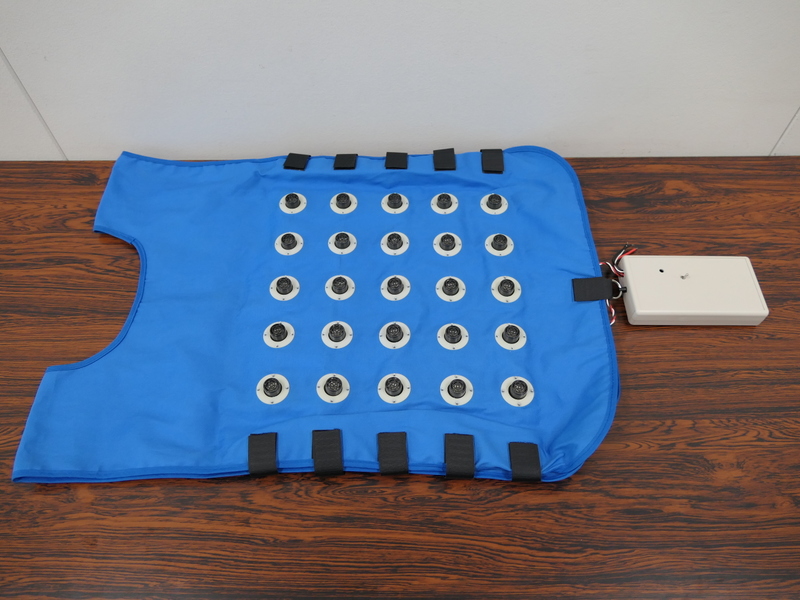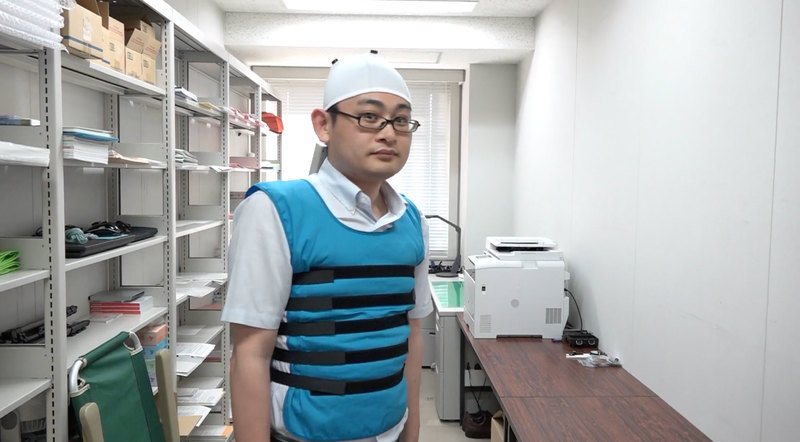Interviews

Eyes in the Back of Your Head - The Suit to Perceive the Imperceptible (Part 2)
Mitsuhiro Matsumoto
A deeper exploration into the formation of the Superhuman Suit and how it was assembled.
Interviewer & Japanese Writer: Yamamoto Takaya; Translation & Editing: Matthew Cherry
In Part 1 of our interview with Mitsuhiro Matsumoto we took a look at an overview of the Superhuman Suit and the founding idea behind the device. Now, we’ll dig deeper into the actual creation of this extension of human perception.

Superhuman Suit
The idea for the Superhuman Suit was created for the sole purpose of taking on the challenge of the INNO-vation Program. In the one-year period from selection to the final report given to the program supervisors, development on that idea commenced and the suit took on form. The suit is worn over clothing, so attaching it with sensors and processors that are normally found in robots weighs the suit down and makes it harder to move about. That is precisely why Matsumoto combined small-scale sensors and oscillators into one unit. With the smaller, lighter configuration, a larger number of sensors can be freely attached to the suit. However, the suit was originally designed to be a "zentai" suit (from the Japanese 全身タイツ, zenshin taitsu, meaning 'whole-body tights') - the suit was initially conceived to be worn around the entire body.
“I’m sure when I first showed this idea in my initial explanation in the program, people must have thought it was weird. Plus, wearing a full-body skin-tight suit is rather embarrassing, so I split it up into a vest and cap after thinking the two hardest places to sense objects from would be from above or behind.”
Even though it was just a prototype, getting people to wear skin-tight clothes can prove to be quite the hurdle to leap.
That being said, development on the suit proceeded rather smoothly.
“I had already envisioned what I wanted to do, plus I had decided to keep the production process simple, so when it came time to actually start making it there weren’t many impediments I came across. Not to say that things went perfectly, but the final product was almost exactly as I had originally envisioned.”
Matsumoto did most of the work himself at his home. While the manufacturing of some parts was supplied from an external company, he worked tirelessly on the soldering and sewing on his own.
Taking a look at the finished Superhuman Suit, what kind of response and feedback did Matsumoto receive?
“In the beginning everyone was saying that it was very ticklish. That was in the early stages. But they also thought it was amazing to be able to feel an object from behind even in a wide-open area. Even if their eyes were closed, they could feel that something was behind them through their backs. If something was above, they felt it on their heads. So they found that to be pretty interesting. Though my relatives thought it was all a bit strange," he laughs. "There were a few people that said it was hard to move around in, or that they couldn’t think of what it could possibly be used for.”
The Superhuman Suit doesn’t rely on sense of sight or sound, but rather a sense of presence. The potential practicality of the suit is quite diverse: a woman wearing it while walking home at night could know if someone was approaching from behind, or if it were used on helmets at construction sites it could alert the user of falling objects.
“The sensors currently protrude just a bit so I’d like to make them smaller. I’d like to make it less than 1 kilogram, but the battery is rather heavy so first I need to make that more lightweight. Once I can improve those areas it’ll bring me closer to actualization.”


